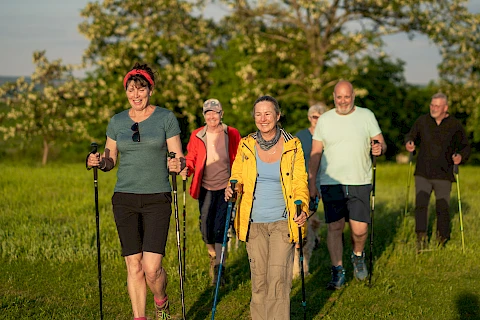
Creating walking groups for seniors is a wonderful way to encourage physical activity and foster social connections. These groups can offer seniors the opportunity to stay active, explore their communities, and build lasting friendships. For caregivers, organizing these outings requires thoughtful planning to ensure they are safe, enjoyable, and accessible.
Benefits of Walking With Others
Walking groups offer a holistic approach to improving the health and well-being of seniors. Regular walking offers numerous benefits for seniors' physical health, including improved cardiovascular health, enhanced mobility and flexibility, and weight management. Keeping joints and muscles active helps maintain mobility, while walking burns calories to aid in weight control. Keep in mind that seniors should consult with a healthcare provider before starting or modifying an exercise routine to ensure it's safe for their individual health conditions.
In addition to physical health, walking groups provide significant mental and social benefits. Physical activity releases endorphins, reducing stress and anxiety and improving mood and mental clarity. Group walking also offers a chance for seniors to share stories, support each other, and feel part of a community. Social engagement during walks can decrease the risk of depression, foster friendships, and build community bonds, combating loneliness and isolation.
Planning Safe and Enjoyable Outings
By carefully planning routes, pacing, timing, and safety measures, caregivers can create a positive and rewarding experience for seniors. These outings can become a highlight of the week, providing joy, companionship, and a healthier lifestyle.
Choosing the Right Route
Select a walking route that is easy to navigate and free from hazards. Consider paths that are flat, well-paved, and offer plenty of shaded areas to rest. Parks, botanical gardens, and scenic neighborhoods can be great choices.
Setting a Comfortable Pace
Ensure the pace of the walk suits everyone in the group. It should be slow enough for all participants to keep up without feeling rushed. Frequent breaks can help maintain energy levels and prevent exhaustion.
Timing and Duration
Schedule walks during times when the weather is mild, such as early morning or late afternoon. Keep the duration manageable, starting with shorter walks and gradually increasing the length as the group becomes more accustomed to the activity.
Hydration and Snacks
Bring plenty of water and light snacks to keep everyone hydrated and energized. Encourage participants to drink water before, during, and after the walk. Offering healthy snacks like fruit can also provide a quick energy boost.
Safety Measures
Prioritize safety by having a first aid kit on hand and knowing the nearest medical facilities. Make sure all participants wear comfortable, supportive shoes and weather-appropriate clothing. Encourage the use of hats and sunscreen to protect against sun exposure.
Inclusivity
Ensure the walking group is inclusive and welcoming to all seniors, regardless of their fitness levels. Encourage participation by promoting a non-competitive atmosphere where everyone feels comfortable joining in.
Social Activities
Enhance the social aspect by incorporating activities such as nature observation, bird watching, or simply sharing stories along the way. This can make the walks more engaging and provide topics for conversation.
Boost Senior Health Today!
Walking groups provide multifaceted benefits, enhancing physical health, mental well-being, and social connections. With the tips outlined, you can create a safe, fun, and engaging walking group that seniors will love. Encourage your loved ones to join a senior walking group today and experience the tremendous benefits.
Does your loved one in Racine, Kenosha, Union Grove, or Pleasant Prairie need more assistance at home? Contact Senior Helpers Racine to learn more about our home care services.